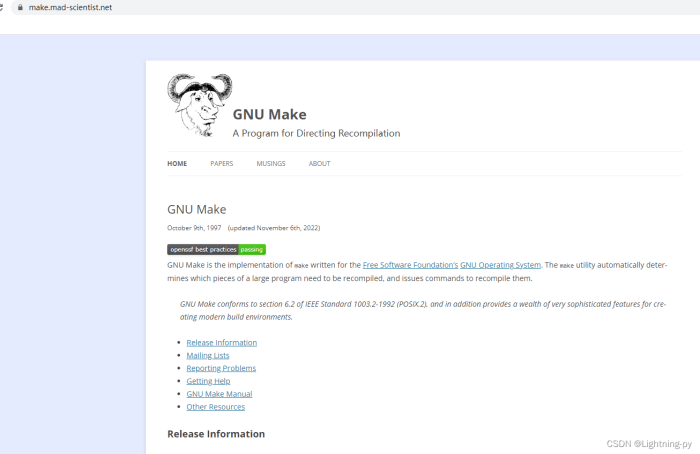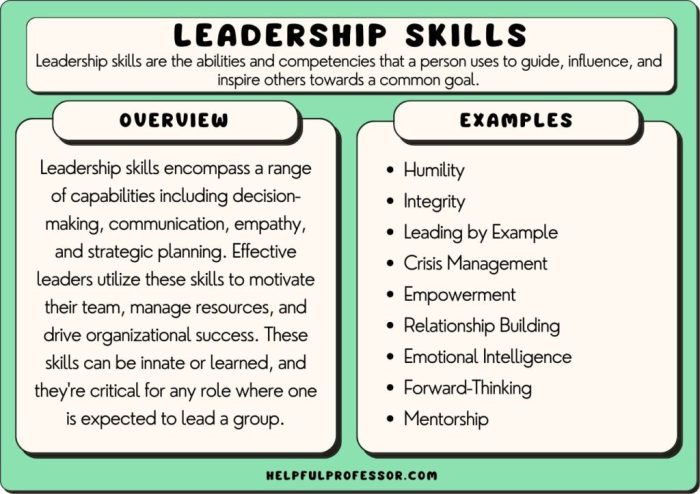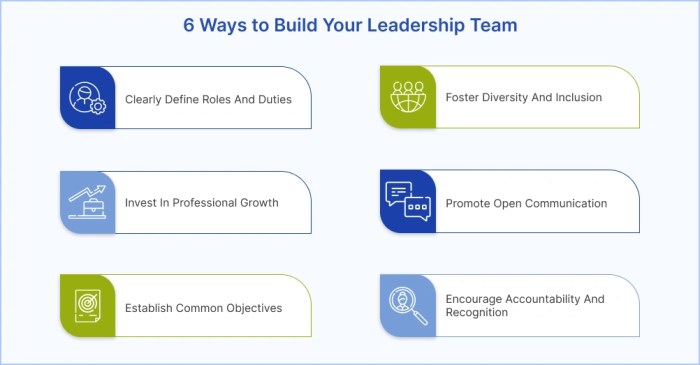7 traits of highly effective leaders in the 21st century are crucial for success in today’s rapidly changing world. This exploration dives into the key characteristics that define exceptional leadership, from vision and communication to accountability and innovation. We’ll examine how these traits are essential for navigating complex challenges and achieving significant results in a globalized and technologically advanced environment.
This analysis will provide a framework for understanding and developing these essential leadership qualities. We’ll explore real-world examples and strategies to apply these traits in various leadership contexts. The article will be organized into a series of chapters, each dedicated to one of the seven traits, ensuring a comprehensive and insightful discussion.
Defining Effective Leadership in the 21st Century
Effective leadership in the 21st century transcends traditional models. It’s no longer sufficient to simply command and control; modern leaders must foster collaboration, inspire innovation, and navigate the complexities of a globalized and technologically advanced world. This requires a nuanced understanding of the shifting landscape and a willingness to adapt and evolve. The key to success lies in recognizing and leveraging the unique challenges and opportunities of this new era.The traditional top-down leadership style, while effective in some contexts, often falls short in the dynamic environment of today.
Leaders of the past frequently relied on hierarchical structures and clear directives. Modern leaders, however, must embrace a more collaborative and distributed approach, leveraging the diverse perspectives and talents within their teams. This shift reflects the increasing importance of knowledge sharing, open communication, and a culture of empowerment.
Key Differences Between Past and Present Leadership Styles
Past leadership styles often emphasized strict hierarchies and a top-down approach. Leaders were seen as possessing all the knowledge and expertise, and decisions were frequently made unilaterally. Conversely, modern leadership styles prioritize collaboration, shared decision-making, and fostering a culture of innovation. Leaders today are seen as facilitators and guides, empowering their teams to contribute their unique insights and skills.
This shift is driven by the increasing complexity of modern challenges and the need to tap into a wider range of perspectives.
Impact of Technology and Globalization on Leadership Expectations
Technology and globalization have fundamentally altered the landscape of leadership. The rapid pace of technological advancement demands leaders who are adept at adapting to new tools and technologies. Globalization creates a diverse workforce with varied cultural backgrounds, requiring leaders to cultivate intercultural understanding and sensitivity. Leaders today need to be skilled communicators, able to bridge cultural gaps and effectively manage teams dispersed across geographical locations.
Furthermore, leaders must embrace continuous learning and be prepared to adapt to rapidly evolving business models and market conditions.
Importance of Adaptability and Resilience in Today’s Leaders
Adaptability and resilience are critical traits for 21st-century leaders. The ever-changing business environment demands leaders who can quickly adjust to new circumstances and challenges. Resilience is essential for navigating setbacks and maintaining a positive outlook during periods of uncertainty or crisis. Leaders who can embrace change and bounce back from adversity will be better equipped to guide their teams through complex situations and emerge stronger.
This requires fostering a growth mindset within their organizations.
Looking at the 7 traits of highly effective leaders in the 21st century, you might find yourself thinking about your own dad. After all, a great leader often embodies qualities that make someone a truly cool dad, like fostering innovation and inspiring others. Maybe your dad is one of the 20 signs you have the coolest dad the world 20 signs you have the coolest dad the world , and that’s a great reflection of leadership.
Ultimately, these 7 traits are about inspiring and empowering others, just like a cool dad inspires and supports his children.
Comparison of Leadership Approaches Across Different Industries
| Industry | Common Leadership Approach | Key Characteristics |
|---|---|---|
| Technology | Agile and iterative | Emphasis on innovation, collaboration, and rapid response to market demands. Leaders foster experimentation and learning from failures. |
| Finance | Data-driven and analytical | Leaders rely on metrics and data to make informed decisions. Strong risk assessment and control are crucial. |
| Healthcare | Patient-centric and ethical | Leaders prioritize patient well-being and uphold ethical standards. Strong communication and empathy are vital. |
| Education | Transformative and empowering | Leaders cultivate a supportive learning environment and empower teachers to inspire students. Focus on developing critical thinking skills. |
Leaders in various industries must adopt approaches that align with the unique demands and challenges of their specific sectors. The table illustrates the different approaches, but each industry requires specific adaptations and nuances in leadership styles.
The Seven Traits: 7 Traits Of Highly Effective Leaders In The 21st Century
Effective leadership in the 21st century demands a multifaceted approach. Gone are the days of solely relying on traditional command-and-control structures. Today’s leaders must adapt to a rapidly changing global landscape, navigating complex challenges with agility and a deep understanding of their teams and the environment. This adaptability necessitates a set of distinct traits that go beyond basic management skills.
Defining the Seven Key Traits
The seven traits Artikeld below represent essential qualities for 21st-century leaders. They are not exhaustive, but they highlight crucial components of modern leadership effectiveness. Each trait is interwoven with the others, creating a synergistic effect that fuels success.
Visionary Leadership
Visionary leaders possess a clear and compelling vision for the future. They articulate this vision effectively, inspiring others to embrace it and work towards a shared objective. This vision must be forward-looking, adaptable to changing circumstances, and capable of motivating diverse teams. Apple’s innovative products, stemming from Steve Jobs’ visionary leadership, exemplify this trait in action. He envisioned a future where technology was user-friendly and aesthetically pleasing, driving the company’s success for decades.
Integrity and Ethical Conduct
Leaders with integrity act ethically in all situations, maintaining high standards of conduct and transparency. This fosters trust among team members, stakeholders, and the public. Leaders who uphold ethical principles inspire confidence and create a positive work environment. Nelson Mandela’s unwavering commitment to justice and equality is a prime example of integrity in action, impacting both his own nation and the global community.
Thinking about the 7 traits of highly effective leaders in the 21st century? They need to be adaptable and visionary, fostering a culture of collaboration. To truly understand how to lead, sometimes you just need a little inspiration, like browsing some recipes for delicious martinis, hands for these 10 tasty martini recipes. Ultimately, these leaders inspire and motivate, creating a positive and productive work environment.
So, keep those martini glasses in mind next time you’re strategizing for the future.
Communication Proficiency
Effective communication is paramount for modern leaders. They must be able to articulate complex ideas clearly and concisely, both verbally and in writing. Active listening, empathy, and the ability to foster open dialogue are also crucial components. Jacinda Ardern’s ability to connect with diverse communities and communicate effectively during challenging times exemplifies this trait.
Strategic Thinking and Problem-Solving
Strategic thinkers can analyze complex situations, identify potential problems, and develop effective solutions. They can anticipate future trends and adjust strategies accordingly. This requires an analytical mindset, the ability to gather data, and the capacity to think creatively. Bill Gates’ strategic vision for Microsoft, which evolved with the changing technological landscape, is a clear illustration of strategic thinking and problem-solving.
Resilience and Adaptability
Leaders must possess resilience to navigate setbacks and challenges. They must be adaptable to changing circumstances, willing to learn from mistakes, and to adjust their strategies as needed. This is essential in today’s dynamic world where rapid change is the norm. The ability to bounce back from failures and to adapt to new situations is a hallmark of resilient leadership, evident in figures like Oprah Winfrey, who overcame significant obstacles to build a media empire.
Collaboration and Teamwork
Successful leaders foster collaboration and teamwork. They recognize the strengths of diverse individuals and create an environment where everyone feels valued and empowered to contribute. They build strong relationships and trust among team members. The success of Google’s innovative culture, emphasizing teamwork and collaboration, highlights the importance of this trait.
Emotional Intelligence
Emotional intelligence (EQ) is a vital component of effective leadership. Leaders with high EQ understand their own emotions and those of others. They can manage their emotions effectively, build strong relationships, and motivate their teams. This includes empathy, self-awareness, and social skills. Leaders like Martin Luther King Jr., who could inspire mass movements through emotional connection, are prime examples of this.
Evaluating Leadership Effectiveness
A framework for evaluating leadership effectiveness based on these seven traits can be structured as follows:
| Trait | Definition | Example |
|---|---|---|
| Visionary Leadership | Articulating a clear and compelling vision for the future. | Steve Jobs |
| Integrity and Ethical Conduct | Acting ethically and transparently in all situations. | Nelson Mandela |
| Communication Proficiency | Articulating ideas clearly and fostering open dialogue. | Jacinda Ardern |
| Strategic Thinking and Problem-Solving | Analyzing situations, identifying problems, and developing effective solutions. | Bill Gates |
| Resilience and Adaptability | Navigating setbacks and adjusting to changing circumstances. | Oprah Winfrey |
| Collaboration and Teamwork | Fostering collaboration and recognizing diverse strengths. | Google’s leadership |
| Emotional Intelligence | Understanding and managing emotions, building strong relationships. | Martin Luther King Jr. |
Trait 1: Vision and Strategy
Visionary leadership is crucial in the 21st century, where businesses and organizations face rapid change and complex challenges. A compelling vision provides a roadmap for the future, guiding decision-making and inspiring action. Effective leaders understand the importance of strategic thinking, using it to translate vision into achievable goals and strategies. This trait goes beyond simple planning; it involves fostering a shared sense of purpose and direction within the team.Effective leaders don’t just react to the present; they proactively shape the future.
This involves a deep understanding of industry trends, technological advancements, and market dynamics. This foresight allows them to anticipate challenges and opportunities, and develop strategies that position their organizations for success.
Developing a Compelling Vision
Leaders craft a vision by understanding the needs and aspirations of their stakeholders. This involves analyzing market trends, understanding customer demands, and considering the organization’s capabilities. A well-defined vision is aspirational, motivating, and relevant to the stakeholders. It should paint a vivid picture of the desired future and inspire belief and commitment.
Strategic Thinking in Achieving Goals
Strategic thinking is the process of defining long-term goals, identifying the resources needed to achieve them, and developing plans to overcome obstacles. It involves anticipating potential problems, identifying opportunities, and creating a roadmap to navigate complexities. Leaders need to be adept at analyzing various scenarios and making informed decisions based on data, intuition, and experience.
Examples of Visionary Leaders
Numerous leaders have shaped their industries through their visionary leadership. For example, Steve Jobs at Apple revolutionized the personal computer industry with a focus on user-friendly design and innovative technology. Similarly, Elon Musk’s vision for electric vehicles and space exploration has transformed both sectors. Their ability to articulate a compelling future and translate it into tangible strategies has been pivotal in their success.
Translating Vision into Actionable Strategies
Effective leaders understand that vision is not enough; it needs to be translated into concrete strategies. This involves breaking down the vision into specific, measurable, achievable, relevant, and time-bound (SMART) objectives. Leaders must then allocate resources, assign responsibilities, and establish clear timelines to ensure that strategies are implemented effectively. Communication is vital in this process; leaders need to clearly articulate the vision and strategies to all stakeholders.
Creating a Clear and Inspiring Vision Statement
A clear and inspiring vision statement serves as a compass for the organization. It should be concise, memorable, and inspirational, reflecting the organization’s values and aspirations. The statement should evoke a sense of purpose and excitement, inspiring stakeholders to contribute to the shared vision. The process of crafting a vision statement should involve input from various stakeholders to ensure inclusivity and buy-in.
Examples of strong vision statements often emphasize future possibilities, not just current goals.
Trait 2: Communication and Influence

Effective communication is the lifeblood of any successful leadership. In today’s complex and interconnected world, leaders must be adept at conveying their vision, motivating teams, and fostering collaboration. This requires more than just speaking; it necessitates understanding different communication styles, building trust, and actively engaging with those they lead. Without strong communication skills, even the most brilliant strategies can falter.Leaders in the 21st century must be more than just visionaries; they must be skilled communicators capable of translating their ideas into actionable plans that resonate with their teams.
This involves understanding diverse communication styles, active listening, and providing constructive feedback. Leaders who effectively communicate inspire confidence and motivate others to achieve shared goals.
Effective Communication Styles
Different leadership styles require different communication approaches. Successful leaders adapt their communication methods to suit the specific context and the individuals they’re addressing. Consideration of audience, message clarity, and the chosen medium are critical components of effective communication.
- Transformational Leaders: Often employ inspirational communication, motivating their teams with a vision and a shared sense of purpose. They use storytelling and emotionally charged language to inspire action and commitment.
- Transactional Leaders: Focus on clear, concise communication, often utilizing reward systems and performance metrics to achieve specific goals. They excel at providing direct and actionable feedback, ensuring teams understand expectations.
- Servant Leaders: Emphasize empathy and understanding in their communication. They prioritize active listening and build rapport with their teams, creating a supportive environment conducive to open dialogue.
Exceptional Communicators
Leaders who excel in communication inspire not only their teams but also entire organizations. Their ability to connect with people on a personal level fosters trust and engagement. Consider the following examples:
- Nelson Mandela: His powerful speeches and ability to articulate a vision of a unified South Africa transcended racial divides. He demonstrated exceptional communication skills by appealing to the shared values of humanity.
- Martin Luther King Jr.: King’s persuasive rhetoric, infused with moral conviction and passion, mobilized a nation and inspired social change. His speeches were not only intellectually compelling but also emotionally moving, touching the hearts of millions.
- Jacinda Ardern: Ardern’s empathetic and approachable communication style, combined with her clear articulation of policy positions, made her a highly effective leader. Her consistent use of clear and concise language in a variety of contexts built trust and support.
Building Trust and Rapport
Trust and rapport are essential for successful leadership. Open and honest communication plays a crucial role in fostering these essential elements.
- Active Listening: Leaders must actively listen to understand the perspectives and concerns of their team members. This includes paying attention to verbal and nonverbal cues, asking clarifying questions, and showing genuine interest.
- Empathy and Understanding: Understanding the needs and motivations of individuals within a team is paramount. Leaders who demonstrate empathy and compassion cultivate a sense of belonging and encourage open communication.
- Open Dialogue: Leaders who encourage open dialogue and two-way communication create an environment where concerns can be voiced, and feedback is valued. This approach fosters collaboration and shared responsibility.
Active Listening and Feedback
Active listening and providing constructive feedback are integral parts of effective communication in leadership. This is critical for fostering a supportive environment and encouraging continuous improvement.
- Active Listening Practices: Leaders who actively listen demonstrate respect and attention to team members’ ideas. They are attentive to both verbal and nonverbal cues and seek to understand the perspectives of others.
- Constructive Feedback: Providing specific and actionable feedback helps team members understand their strengths and areas for improvement. Feedback should be delivered with empathy and focus on behaviors rather than personalities.
Trait 3: Decision-Making and Problem-Solving
Effective leaders in the 21st century must possess robust decision-making and problem-solving skills. These abilities are crucial for navigating complex challenges, adapting to rapid change, and achieving strategic objectives. A leader’s ability to make sound judgments and implement effective solutions directly impacts the success and well-being of their team and organization. The quality of decisions made under pressure often defines the leader’s effectiveness.Effective decision-making processes are characterized by careful consideration of various factors, a comprehensive understanding of the situation, and a commitment to transparency and accountability.
This includes a clear definition of the problem, exploration of alternative solutions, rigorous evaluation of potential outcomes, and a well-defined plan for implementation. Ultimately, effective leaders are those who can make sound judgments in a timely manner while considering the potential consequences of their choices.
Characteristics of Effective Decision-Making Processes
Effective decision-making processes rely on several key characteristics. These include a structured approach to problem analysis, a willingness to consider diverse perspectives, and a commitment to thorough evaluation of potential outcomes. Leaders should encourage open communication and active participation from their teams in the decision-making process. This promotes buy-in, fosters a sense of ownership, and increases the likelihood of successful implementation.
A culture of trust and open dialogue is vital for these processes to flourish.
Approaches to Problem-Solving in Complex Situations
Problem-solving in complex situations requires a multifaceted approach. This includes a variety of strategies and techniques that can be adapted to specific circumstances. Leaders must employ creative thinking, utilize data-driven insights, and consider the potential impact on various stakeholders. A systematic approach that incorporates various perspectives and considers potential risks is key to effective problem-solving. One example is the use of scenario planning, which involves developing multiple possible futures and outlining potential responses to each.
Examples of Leaders Who Excel at Quick and Decisive Decision-Making
Several historical and contemporary leaders are renowned for their ability to make quick and decisive decisions. For example, Winston Churchill’s leadership during World War II demonstrated his capacity for swift action in the face of immense pressure. More recently, Jack Welch, during his tenure as CEO of General Electric, was known for his decisive decision-making, which helped transform the company.
These leaders were able to leverage their experience, intuition, and understanding of the situation to make critical decisions that often impacted millions. This demonstrated a balance between speed and careful consideration.
Leveraging Data and Insights for Better Decisions
In the 21st century, data and insights play a critical role in supporting effective decision-making. Leaders must be adept at gathering, analyzing, and interpreting data to inform their choices. Utilizing data analytics and market research can provide valuable insights into consumer behavior, competitor activities, and industry trends. By incorporating this information into their decision-making process, leaders can make more informed choices, minimizing risks and maximizing potential benefits.
This data-driven approach often leads to more accurate predictions and improved outcomes.
Strategies to Mitigate Risks During Decision-Making
Risk mitigation is a crucial aspect of effective decision-making. Leaders must proactively identify potential risks and develop strategies to minimize their impact. This involves conducting thorough risk assessments, evaluating potential scenarios, and implementing contingency plans. For example, a leader might consider the potential negative impacts of a new project on existing operations and develop strategies to minimize disruption.
A comprehensive approach to risk assessment allows for better preparation and reduces the chance of unforeseen negative outcomes. Effective leaders often employ various methods to evaluate potential risks and develop proactive plans to minimize potential harm.
Trait 4: Integrity and Ethical Conduct
Ethical leadership is paramount in the 21st century. Leaders must not only achieve results but also demonstrate unwavering integrity and ethical conduct. This trait fosters trust, builds strong relationships, and ultimately contributes to a positive and sustainable organizational environment. The ethical compass of a leader guides their decisions and actions, shaping the culture and values of the entire team.Integrity is the bedrock of trust.
It encompasses honesty, transparency, and accountability in all aspects of leadership. Leaders who embody these values earn the respect and confidence of their followers, fostering a supportive and productive work environment. In today’s complex world, ethical dilemmas are pervasive, requiring leaders to make difficult choices with strong moral foundations.
Importance of Ethical Leadership Principles
Ethical leadership principles are fundamental to organizational success. They provide a framework for decision-making, ensuring that actions are aligned with values and principles. Ethical leaders create a culture of trust, fostering open communication and collaboration. This, in turn, promotes innovation, creativity, and commitment from employees.
Role of Integrity in Building Trust and Credibility
Integrity is the cornerstone of trust and credibility. Leaders with strong integrity are perceived as reliable, trustworthy, and committed to fairness. Their actions consistently align with their values, building a reputation for honesty and transparency. This fosters a climate where employees feel comfortable taking risks, sharing ideas, and contributing to the organization’s success.
Challenges of Maintaining Ethical Standards in a Complex Environment
Maintaining ethical standards in today’s complex business environment is a significant challenge. Globalization, technological advancements, and intense competition can create pressure to compromise ethical principles for short-term gains. Leaders must navigate these complexities with a strong moral compass, prioritizing long-term values over immediate pressures. This often involves navigating conflicting interests and making difficult choices. Ethical frameworks and codes of conduct can provide valuable guidance in such situations.
Examples of Leaders Who Have Demonstrated Strong Ethical Values
Several leaders throughout history and in the modern era have demonstrated strong ethical values. Nelson Mandela, for instance, exemplified resilience and forgiveness in his struggle for equality. Similarly, Mahatma Gandhi’s commitment to non-violent resistance remains a powerful example of ethical leadership. In the business world, leaders like Bill Gates and the founders of Patagonia demonstrate ethical conduct by prioritizing sustainability and social responsibility alongside profitability.
Developing 7 traits of highly effective leaders in the 21st century hinges on innovative thinking. One key aspect is fostering creativity, and exploring unconventional approaches. Learning how to think outside the box is crucial, and resources like 11 ways to think outside the box provide valuable insight into this. Ultimately, these fresh perspectives are essential for leaders navigating today’s dynamic landscape.
These examples highlight the enduring importance of ethical principles in leadership.
Ethical Leadership Principles and Best Practices
| Principle | Description | Best Practice |
|---|---|---|
| Honesty | Truthfulness and integrity in all communications and actions. | Be transparent in your dealings and provide accurate information. |
| Fairness | Treating all stakeholders equitably and impartially. | Develop policies and procedures that ensure equitable treatment for all. |
| Responsibility | Taking ownership of decisions and actions. | Acknowledge mistakes and take corrective actions. |
| Accountability | Holding oneself and others accountable for their actions. | Establish clear lines of accountability and enforce them consistently. |
| Respect | Treating others with dignity and consideration. | Foster a culture of mutual respect and inclusivity. |
| Transparency | Openness and honesty in decision-making and communication. | Share information openly and honestly with stakeholders. |
Trait 5: Accountability and Responsibility

Accountability and responsibility are cornerstones of effective leadership in the 21st century. Leaders who embrace these traits inspire trust, foster collaboration, and drive positive outcomes within their teams and organizations. They understand that taking ownership of actions and decisions, both successes and failures, is crucial for growth and continuous improvement. This trait is essential for building a strong foundation of ethical conduct and organizational effectiveness.Accountability in leadership extends beyond simply taking credit for successes.
It involves acknowledging mistakes, learning from setbacks, and actively working to prevent similar errors in the future. It’s about fostering a culture where individuals feel empowered to take ownership of their work, knowing they will be supported and guided in their efforts, while also held accountable for their actions. This creates a powerful feedback loop that promotes continuous learning and development.
Defining Accountability in Leadership
Accountability in leadership means taking ownership of one’s actions and decisions, both positive and negative. It’s about being answerable for the results and outcomes of one’s choices, and demonstrating a commitment to achieving the desired goals and objectives. It involves proactive problem-solving, addressing issues promptly, and learning from failures to prevent similar occurrences.
Taking Responsibility for Actions and Decisions
Leaders who take responsibility for their actions and decisions create a culture of trust and respect within their teams. They demonstrate a willingness to admit mistakes, learn from them, and take corrective actions. This fosters a sense of psychological safety, encouraging team members to take risks and contribute their best work.
Examples of Leaders Embodying Accountability
Many leaders throughout history have demonstrated exceptional accountability and responsibility. For instance, Nelson Mandela, despite facing immense adversity and personal struggles, consistently demonstrated unwavering integrity and accountability in his leadership. Similarly, Mahatma Gandhi’s commitment to nonviolent resistance and his willingness to accept responsibility for the consequences of his actions exemplifies the power of accountability. These examples highlight how a leader’s commitment to ethical principles, and taking ownership of their decisions, can inspire positive change and have far-reaching effects.
A more contemporary example of a leader demonstrating accountability is Elon Musk, known for both his innovative spirit and willingness to acknowledge and learn from mistakes.
The Importance of Transparency in Leadership
Transparency is intrinsically linked to accountability. Open communication, honest reporting, and a willingness to share information with stakeholders, including team members, investors, and the public, fosters trust and promotes a culture of accountability. Transparency builds credibility and strengthens the overall reputation of the leader and the organization.
Methods for Holding Teams Accountable
Establishing clear expectations and goals is essential for holding teams accountable. Communicating these expectations clearly and consistently, through regular feedback sessions, ensures that everyone understands their responsibilities. Regular performance reviews and progress reports provide opportunities for constructive feedback and guidance, fostering continuous improvement. Additionally, implementing a system of rewards and recognition for achieving goals reinforces desired behaviors and motivates team members to strive for excellence.
Clear and consistent processes and protocols are also vital, providing a framework for accountability.
Trait 6: Collaboration and Teamwork
Effective leadership in the 21st century hinges significantly on the ability to foster collaboration and build high-performing teams. In today’s complex and interconnected world, no single individual possesses all the necessary skills or knowledge to tackle multifaceted challenges. Successfully navigating these challenges demands the collective intelligence and diverse perspectives of a well-coordinated team. A leader who excels at collaboration not only achieves greater outcomes but also cultivates a more engaged and motivated workforce.
Importance of Collaboration in Achieving Goals
Collaboration is crucial for achieving complex goals. Diverse perspectives, combined skills, and shared accountability contribute to innovative solutions and higher-quality outputs. A collaborative environment empowers individuals to leverage each other’s strengths, fostering a culture of mutual support and shared success. This synergy results in a more robust and resilient approach to problem-solving.
Strategies for Building High-Performing Teams
Building high-performing teams requires a multi-faceted approach. Clear communication of shared goals, roles, and responsibilities is paramount. Effective leaders establish a supportive and inclusive environment where team members feel empowered to contribute their unique talents. Encouraging open communication channels and regular feedback mechanisms are vital for maintaining a collaborative spirit and ensuring team members feel valued. Establishing clear processes for decision-making and problem-solving is also key to a high-performing team.
Examples of Leaders Who Excel at Fostering Collaboration
Numerous leaders throughout history and in contemporary organizations have demonstrated exceptional abilities in fostering collaboration. For instance, Nelson Mandela’s leadership during South Africa’s transition to democracy exemplified the power of collaboration across diverse backgrounds. Similarly, leaders in the tech industry, like the co-founders of companies like Google and Microsoft, are frequently praised for their ability to create a collaborative environment that fostered innovation and growth.
Importance of Diversity and Inclusion in Teams
Diversity and inclusion are not just buzzwords; they are essential elements of high-performing teams. Teams composed of individuals with varied backgrounds, experiences, and perspectives bring a wider range of ideas and solutions to the table. Leaders who prioritize diversity and inclusion create an environment where everyone feels valued and respected, ultimately leading to a more innovative and creative team dynamic.
This fosters a more inclusive work environment where everyone feels comfortable sharing their ideas.
Techniques for Resolving Conflicts Within Teams, 7 traits of highly effective leaders in the 21st century
Conflicts are inevitable in any team environment. However, effective leaders recognize conflicts as opportunities for growth and learning. Open communication, active listening, and a commitment to finding mutually beneficial solutions are essential in resolving conflicts constructively. Establishing clear processes for addressing disagreements and providing opportunities for mediation and negotiation can facilitate a resolution that respects all parties involved.
Trait 7: Adaptability and Innovation
Adaptability and innovation are crucial leadership traits in the dynamic 21st-century landscape. Leaders must not only navigate the ever-shifting business environment but also proactively shape it through new ideas and approaches. This requires a willingness to embrace change, learn from failures, and foster a culture of experimentation within their organizations. Leaders who can successfully adapt and innovate will not only thrive but also inspire those around them to do the same.The ability to adapt and innovate is not simply about reacting to change; it’s about proactively anticipating and shaping it.
Leaders must be able to recognize emerging trends, analyze market shifts, and anticipate future challenges and opportunities. This forward-thinking approach requires a willingness to step outside of established routines and embrace new ideas, even when they seem unconventional or risky.
Embracing Change and New Ideas
Leaders who embrace change and new ideas demonstrate a clear understanding of the importance of adaptability in today’s rapidly evolving business world. They recognize that the status quo is often unsustainable and that staying stagnant can lead to irrelevance. These leaders actively seek out new information, perspectives, and technologies, recognizing that continuous learning is essential for success. Furthermore, they create a safe space for their teams to express new ideas, knowing that even seemingly unconventional proposals can lead to breakthroughs.
This environment fosters a culture of continuous improvement and encourages experimentation.
Examples of Innovative Leaders
Numerous leaders throughout history have demonstrated exceptional innovation and adaptability. For example, Steve Jobs at Apple, consistently disrupted the technology industry with innovative products like the iPhone and iPad. Similarly, Elon Musk at Tesla and SpaceX has demonstrated a commitment to pushing technological boundaries, leading to breakthroughs in electric vehicles and space exploration. These leaders are not afraid to challenge existing norms and explore new possibilities, fostering a culture of innovation within their organizations.
They consistently prioritize experimentation and learning from both successes and failures.
Creativity and Experimentation in Leadership
Creativity and experimentation are essential components of effective leadership. Leaders who encourage creativity within their teams empower individuals to think outside the box, explore new approaches, and challenge established norms. Experimentation, while potentially risky, is a vital part of the innovation process. Leaders should provide resources and support for teams to test new ideas, iterate on prototypes, and learn from both successes and failures.
This iterative process of trial and error is fundamental to the advancement of any organization.
Fostering a Culture of Innovation
Cultivating a culture of innovation within an organization requires a multi-faceted approach. First, leaders must establish a clear vision and values that support innovation. This vision must permeate every level of the organization, from the top executives to the frontline employees. Secondly, fostering open communication channels is crucial. Encouraging feedback, actively listening to diverse perspectives, and creating a safe space for sharing ideas are vital.
Finally, leaders must reward and recognize innovative efforts. Creating an environment where individuals are rewarded for taking calculated risks and demonstrating creativity is crucial for motivating and encouraging continued innovation. This recognition will foster a culture of experimentation and continuous improvement.
Final Wrap-Up
In conclusion, the 7 traits of highly effective leaders in the 21st century highlight the multifaceted nature of leadership. It’s not just about one single quality, but a combination of vision, communication, decisive decision-making, ethical conduct, accountability, collaboration, and adaptability. Cultivating these traits is essential for leading teams and organizations to success in today’s complex and dynamic environment.
By understanding and applying these principles, individuals can enhance their leadership skills and contribute to a more effective and innovative future.











